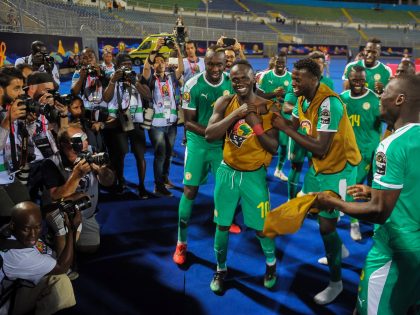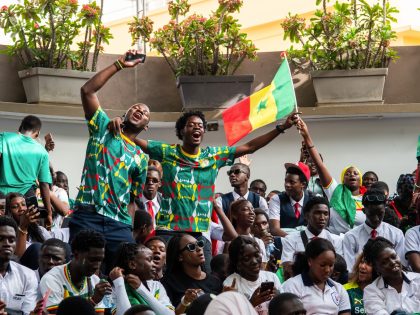Rastafari and His Imperial Majesty
It's understandable that Rastafari aren’t critical about Haile Selassie, but the idealization of the monarch and Ethiopia in general can prevent critical analysis.

Haile Selassie in 1935. Photo by Lucien Aigner, via Flickr CC.
August 27th marks the anniversary of the end of Emperor Haile Selassie rule over Ethiopia by a military coup in 1974. His successors became known as the Derg regime and they in turn would rule until 1987. To mark this event, the Jamaica Gleaner published a piece entitled “Selassie: A Very Modern Monarch.” The piece was largely positive, suggesting that His Imperial Majesty was “responsible for leading a largely illiterate, rural and feudal country with 2,000 languages and dialects into the 20th century.” Not sure about that 2,000 number, but quite sure that the article didn’t provide any perspective from Ethiopians.
It’s an example of the distance between Rastafari and Ethiopian viewpoints, a distance exemplified most starkly in descriptions of the Conquering Lion of the Tribe of Judah’s arrival in Jamaica, on April 21, 1966. His Majesty was met by a legion of Rastafari brethren, intent on catching a glimpse of their messiah. In Vin Kelly’s film of the occasion, it is evident that His Majesty arrived during or shortly after it stopped raining.
According to the Jamaica Gleaner, one Rastafari observer was quite plain about what had happened: “See how God stop de rain.”
In Ethiopia, however, a common story is that Jamaica was experiencing drought and that when the Emperor arrived, rain a fall. Rastafari saw their God stop the rain, the Ethiopian tale suggests that the rain started when the Emperor arrived. Thus, instead of knowing that Haile Selassie was divine and therefore would stop the rain, the Ethiopian version suggests that the Emperor was seen as performing a miracle. This is why Rastafari believe that he is divine. This was the catalyst. In addition to the stories presenting opposite actions–the rain stopping versus starting–they also suggest different frames of reference. The Rastafari saw the King as messiah before he arrived, hence able to stop the rain. The Ethiopian story presents a situation in which the coincidence of rain falling and Haile Selassie’s arrival led to a misconception that the Emperor had some divine control over the forces of nature. In the Ethiopian narrative, the Rastafari belief does not stem from Haile Selassie’s (and Ethiopia’s) powerful spiritual and symbolic resonance, but a simple coincidence. The perspectives are like two ships passing in the night.
Like the Jamaican opinions regarding Edward Seaga and Michael Manley, be they deep love or equally deep hatred, the same exists in Ethiopia for Haile Selassie. There is the Emperor Haile Selassie Foundation, which spearheaded efforts that lead to the burial of Ethiopia’s last ruling monarch in 2000—they obviously represent an enduring care and belief in the positive legacy of the king, but stop short of any discussion of the divinity of His Majesty.
But there are, of course, divergent view points; for example, a quick google locates this comment by Bakalcho Barii:
Under Emperor Haile Selassie, the Amarazation of the Oromo’s and other southern nations’ people was implemented at higher speed. Oromo’s and others were told to deny their identities and take on the Abyssinian identity under the guise of the greater Ethiopia [sic].
The work of Oromo nationalist Asafa Jalata pushes this argument even further. And the comments on an Addis Journal post about Nelson Mandela and Haile Selassie demonstrate a range of opinions as well.
The symbolic and spiritual resonance of Haile Selassie is as powerful as the symbolic and spiritual resonance of Ethiopia itself. Historian Tibebu Teshale has written about how the “pan-African construction of Ethiopian identity not only includes Ethiopia as part of Africa but made Ethiopia the quintessence of Africa. Ethiopia became the concentrated expression of Africa. Ethiopia carried the burden and suffering that was Africa. Ethiopia symbolized the hope and pride of Africa.”
Paradoxically, in addition to representing all of Africa, Ethiopia is also seen as unique in Africa due to its identity as a non-colonized nation. Surely, it’s understandable that Rastafari aren’t critical about Haile Selassie, but the idealization of the monarch and Ethiopia in general can prevent critical analysis. As Tibebu puts it: “Ethiopian history should be studied afresh and should no longer be grounded on racial or geographical paradigms.” Maybe the same can be said about His Imperial Majesty Haile Selassie I, Conquering Lion of the Tribe of Judah, King of Kings of Ethiopia, Elect of God.



















